Winton: The heart of Queensland
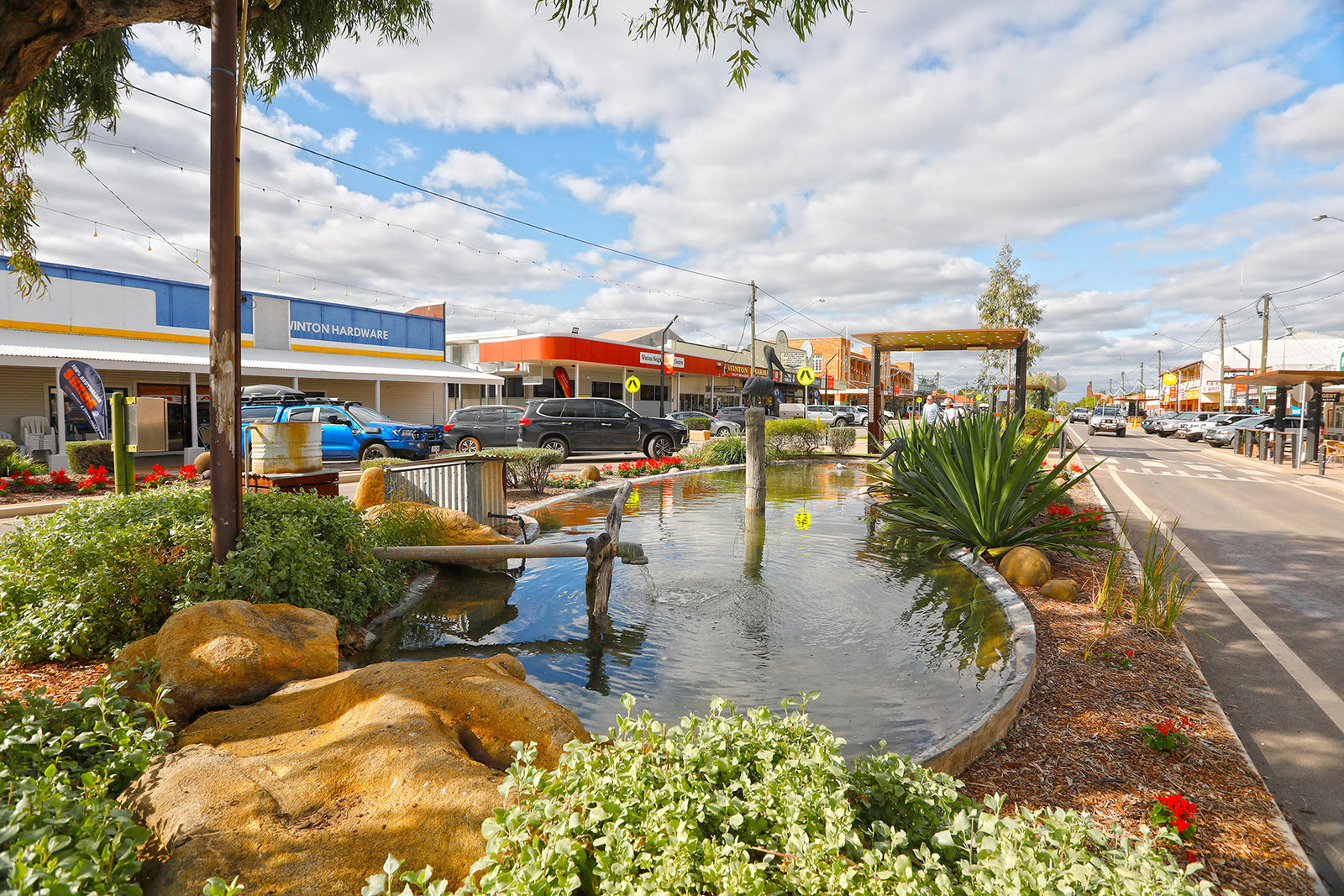
Discover the town that gave us Waltzing Matilda, Qantas, and is the ‘Dinosaur Capital of Australia'.
Winton stands at the junction of two major highways that run through the heart of Central West Queensland — the Landsborough Highway from Longreach to Cloncurry and the Kennedy Developmental Road from Boulia to Hughenden. Brisbane is a distant 1360km away to the south-east. It is the administrative centre and service hub of a shire that sprawls 54,000sq km over seemingly endless Mitchell grass plains devoted to sheep and cattle grazing.
This fascinating outback town, with a modest population of around 1600, makes no less than three claims to fame in Australian culture — our unofficial national anthem, Waltzing Matilda, was written by Banjo Paterson and first performed here; it was the birthplace of our national airline, Qantas; and it is the undisputed ‘Dinosaur Capital of Australia’.
Koa Country
Winton lies near the centre of the traditional lands of the Koa Aboriginal people, which embraces the headwaters of the Diamantina River and the area now designated as the Bladensburg National Park. These low-lying semi-arid plains are drained to the south-west by seasonal watercourses and braided streams typical of the Channel Country. Summers are swelteringly hot, and winters are pleasantly mild. Rainfall is highly variable, swinging periodically between searing drought and widespread floods.
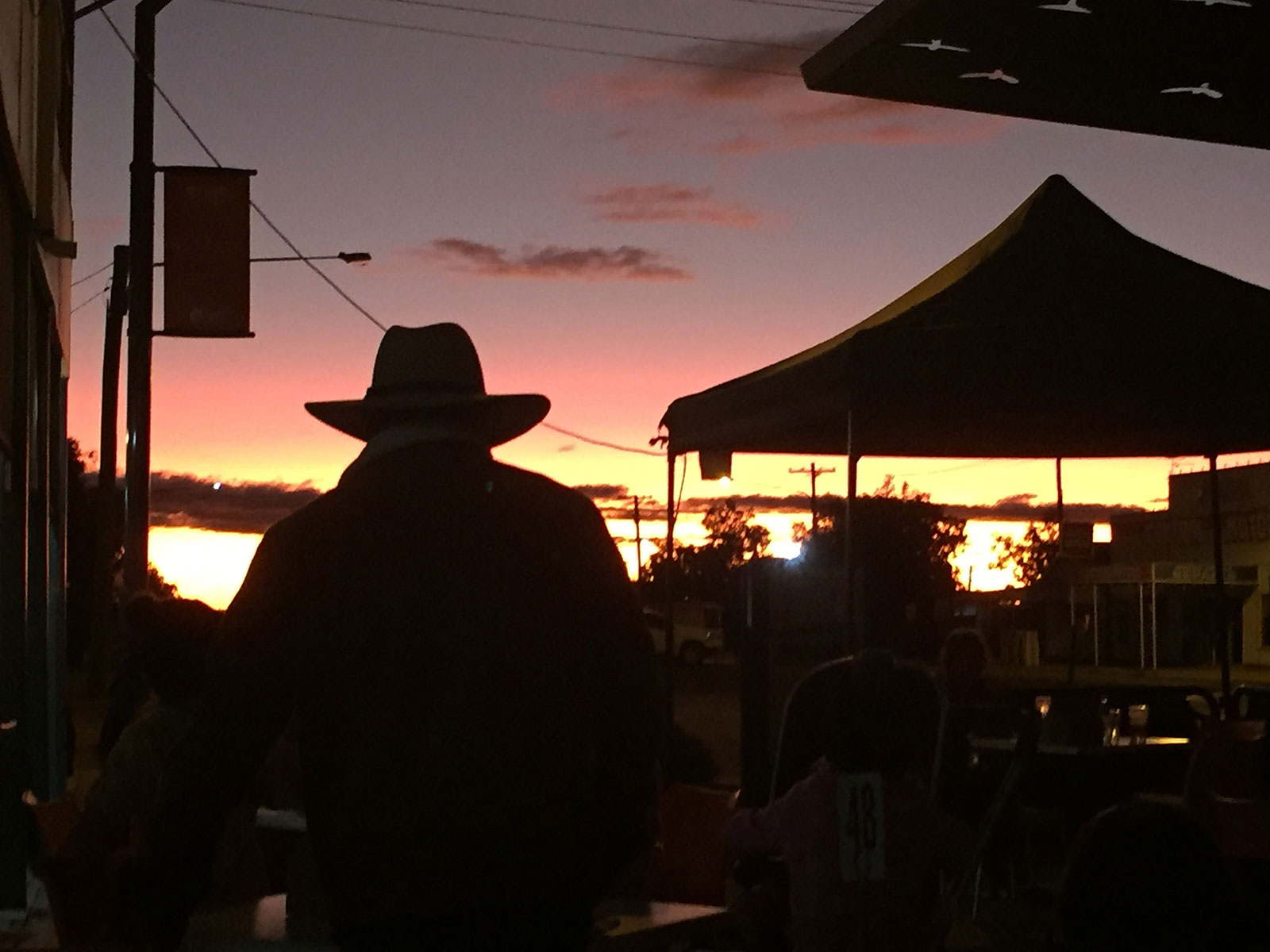
When Europeans began to settle in the region and occupy the plains for grazing cattle, the Koa people were dispossessed of their tribal lands and forcibly dispersed. A particularly dark chapter in colonial history concerns a ‘dispersal’ that took place in 1877 on Bladensburg Station, 15km from Winton. In reprisal for an Aboriginal attack on a bullock wagon during which a white man was killed, a contingent of Native Police troopers and local graziers attacked and killed 200 Koa people camped on the banks of Mistake Creek. The incident is now referred to as the Bladensburg Massacre and the location as Skull Hole.
In 2021, the Federal Court of Australia recognised the Koa people as native title holders of land covering 31,400sq km, which includes the towns of Winton, Kynuna, Corfield and Middleton.
European Arrival
The first Europeans to explore the Winton region were William Landsborough, John McKinlay and Frederick Walker who, in 1861–62, led separate expeditions in search of the missing Burke and Wills. They had seen it in a good season and their reports of verdant grasslands suitable for grazing attracted pastoralists who began to settle in the district from around the mid-1860s.
In a recurring cycle that would prove typical of the plains’ environment, a severe drought in the late 1860s forced some settlers to abandon their holdings, but a new wave of settlement came when the drought broke and rising wool prices rekindled interest in pastoralism. By the mid-1870s, pastoral leases occupied most of the district.
From Waterhole to Winton
In 1875, a former police sergeant from Aramac, Robert Allen, arrived in the area and opened a store and hotel at Pelican Waterhole, a crossing point on the Western River. When the waterhole flooded in the following year, Allen moved his business to higher ground about a mile away and named the site Winton after his hometown in Bournemouth (England).
Winton's role as the region's business hub was assured in the late-1870s when entrepreneurs William Corfield, Robert Fitzmaurice and Thomas Lynett established stores and several hotels along the main street. The town was formally gazetted in 1879 and became the administrative centre of the local government division when it was proclaimed seven years later.
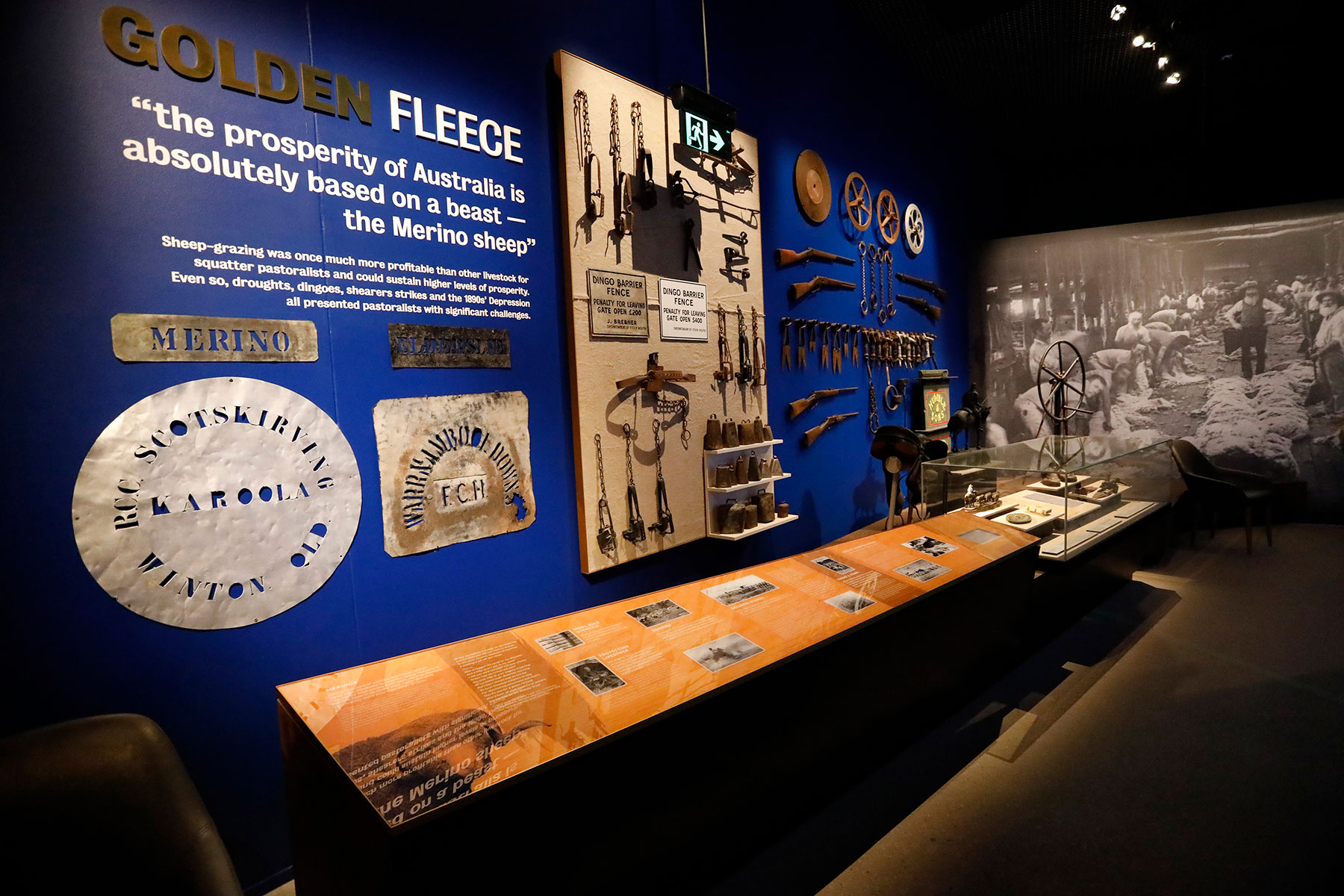
Industrial Unrest
By 1890, Queensland, and the Winton district in particular, were major contributors to Australia’s wool industry, despite consistently poor working conditions for shearers. With the growth of the industry, the number of shearers increased and many joined unions to campaign for better conditions. They ‘unionised’ thousands of sheds across the country, which soon brought them into conflict with pastoralists who advocated freedom of contract with non-union labour to control wages and break the unions’ control.
In January 1891, the Queensland unions declared a boycott of non-union sheds, and striking shearers walked off many stations around Winton and other centres. From February until May, central Queensland was on the brink of civil war. Striking shearers formed armed camps outside towns, with the Winton camp vowing to “fight to the bitter end". Thousands of soldiers were mobilised to protect non-union labour and arrest strike leaders. The unionists retaliated by raiding shearing sheds, harassing non-union labour and committing acts of sabotage, like burning down the woolshed on Elderslie Station.
But the shearers were unable to hold out and, by May, the union camps were full of hungry, penniless shearers who were forced to return to work in order to survive. The pastoralists had won but it had proved a costly exercise and, as it turned out, a short-lived victory. Tensions continued to simmer. Falling wool prices moved pastoralists to cut pay rates and hire non-union labour, which was plentiful due to mass unemployment during a nationwide depression. Increasingly militant and desperate unions rose to the defence of shearers' wages and, in 1894, Winton once again found itself at the centre of another violent struggle when a second shearers’ strike was called.
During the ‘Battle of Dagworth Station’ in September 1894, armed shearers, led by Samuel ‘Frenchy’ Hoffmeister, stormed the property and burned down the woolshed. The station’s owner, Robert Macpherson, and three policemen pursued Hoffmeister to nearby Combo Waterhole, where he killed himself rather than be captured. By October 1894, the Queensland unions conceded defeat and called off the strike in that state, although the struggle would continue unabated in New South Wales for some time to come.
Waltzing Matilda
In January 1895, Banjo Paterson visited his friend, Bob Macpherson, at Dagworth Station, 100km north-west of Winton. One evening, Bob’s sister, Christina, entertained the guests by playing the Scottish tune Craigielea. Paterson quite liked the melody and, when he was told it had no words, set about writing lyrics for it. Thus, Waltzing Matilda was written and given its first public performance at Winton’s North Gregory Hotel on 6 April 1895.
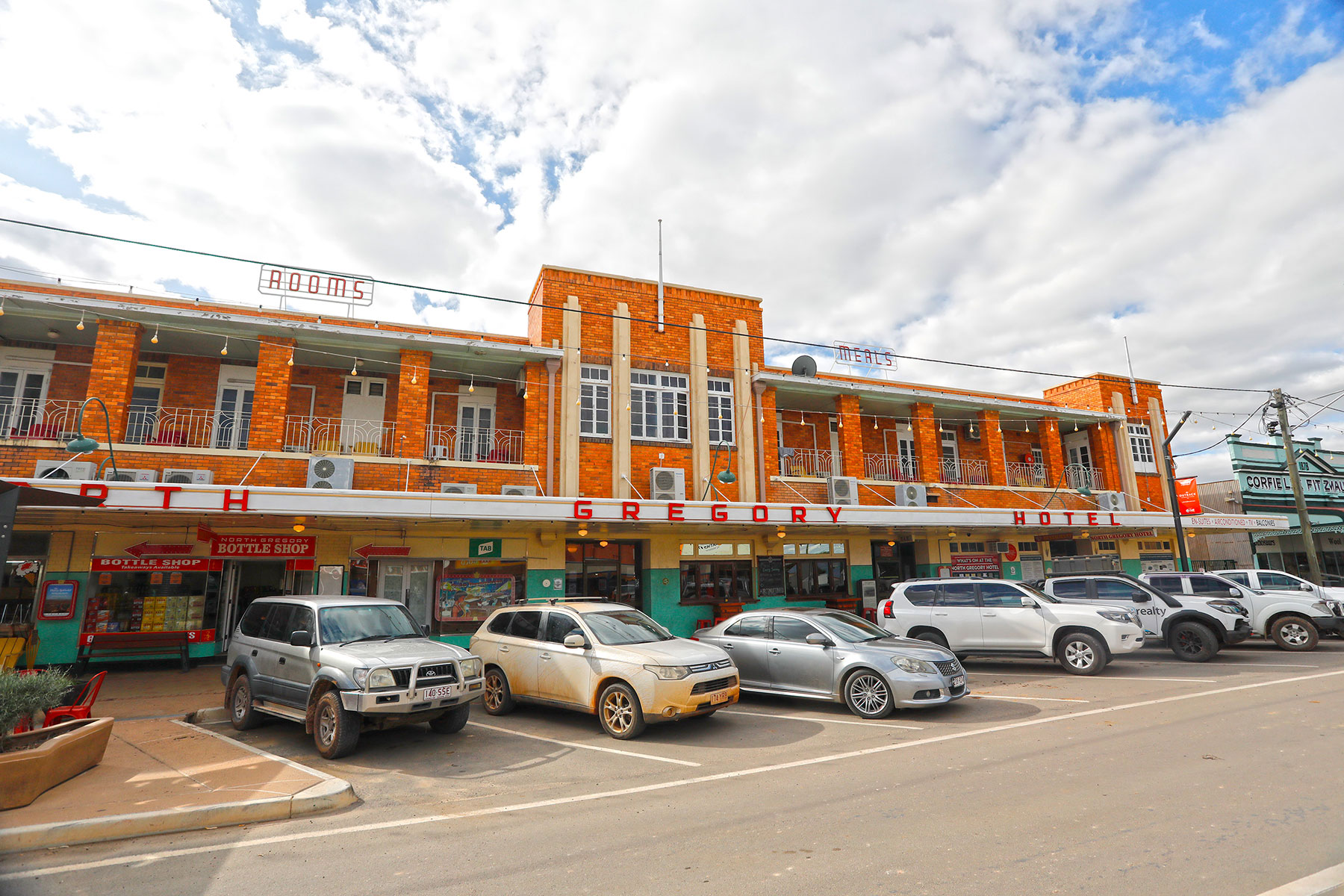
Many theories have been advanced as to the inspiration for the words. One suggests that they are based on a story told locally about the misadventures of an unknown swagman. Another, favoured by historians, is that the poem is a political allegory based on the Hoffmeister incident at Combo Waterhole. Whatever may be the true explanation, the song has been embraced by Australians everywhere and sung with gusto as our unofficial national anthem.
On 6 April 1995, Winton marked the centenary of Waltzing Matilda with a festival, attended by Prime Minister Paul Keating and Queensland Premier Wayne Goss who unveiled a statue of Banjo Paterson. (Matilda Day has since become an annual event in the town.) Completed at a cost of $3.1 million, the Waltzing Matilda Centre was opened in 1998, combining Winton's existing Qantilda Museum with an impressive range of new displays constructed around Paterson’s story of the swagman. It was the world’s first museum dedicated to a song. Disaster struck in June 2015 when the centre burned down, destroying many artefacts. It was rebuilt and reopened in April 2018 and continues as one of the town’s principal attractions.

The Flying Kangaroo
Winton’s remoteness in central Queensland was gradually overcome by the commencement of regular stagecoach services by Cobb & Co in 1880, and the arrival of the railway from Townsville via Hughenden (1887) and from Rockhampton through Longreach (1892). But the whole concept of transport was revolutionised on 16 November 1920, when a group of World War I veterans — Paul McGinness, Hudson Fysh and Fergus McMaster — met at the Winton Club to found Queensland and Northern Territory Aerial Services Limited (Qantas).
Inspired by the ‘spirit of ANZAC’, these young aviators shared a vision of connecting outback communities with major population centres in Australia and overseas. The company headquarters was moved to Longreach in 1921 and, from joyriding and charter work, quickly developed a route network that included its first international passenger service (to Singapore) in 1935. Since then, ‘The Flying Kangaroo’ has become Australia’s national carrier and the third-oldest airline in the world.
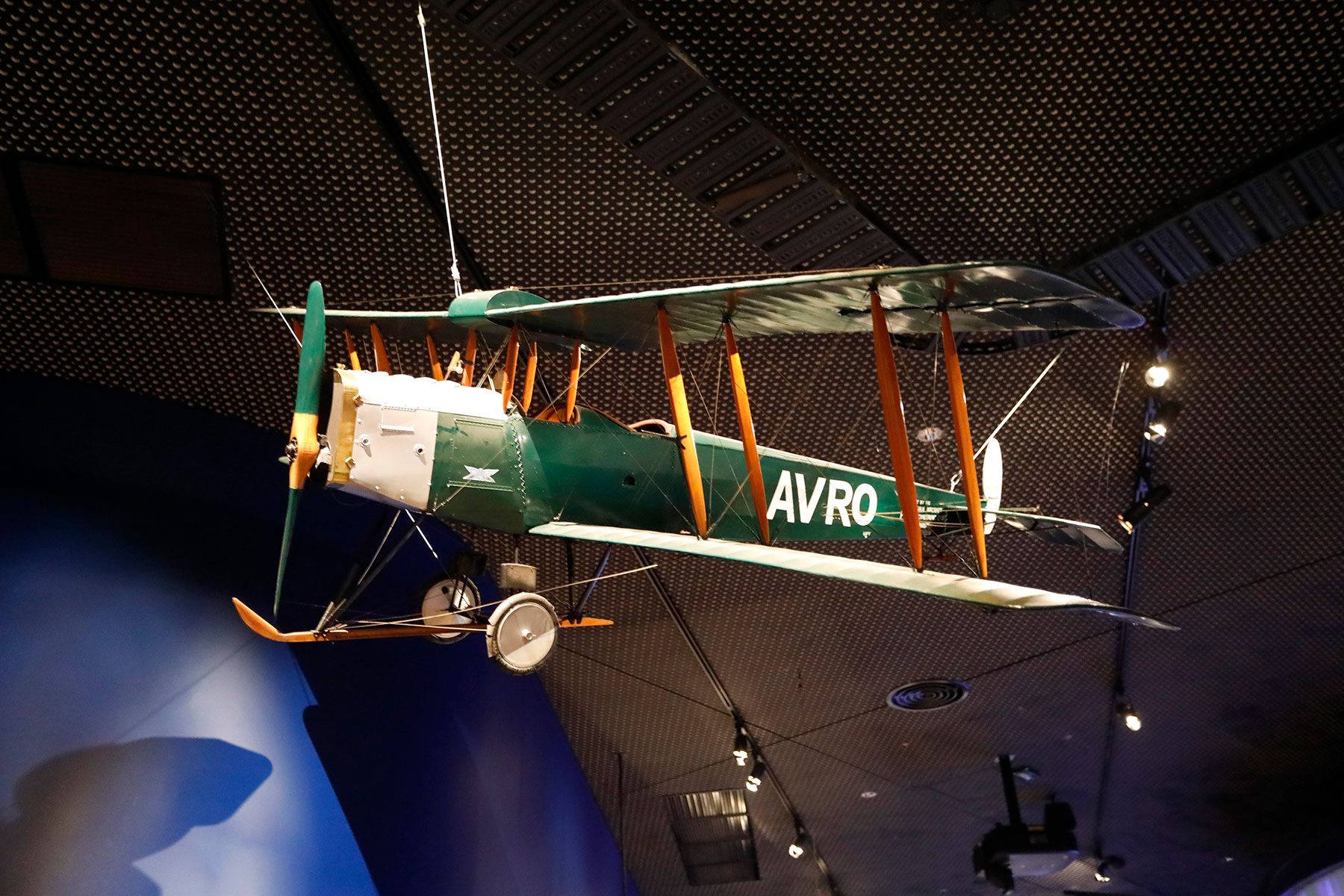
Dinosaur Capital of Australia
While Winton’s economy remains heavily dependent on pastoral prosperity, it has built up a strong tourist trade as the ‘Dinosaur Capital of Australia’ based on several major fossil discoveries in the surrounding plains. In fact, since 1999, the Winton Shire has produced more fossil material from large dinosaurs than any other region in Australia, with several new sites being discovered each year yielding more extraordinary specimens.
Most of these have been 100-million-year-old sauropods, called ‘titanosaurs’ because they were the largest land animals that ever walked the Earth. Scientists have bestowed the most notable and complete of the local behemoth specimens with whimsical names like Elliot, Wade, Matilda and Clancy, all measuring around 15–18m long, 3.5m at the shoulder and weighing an estimated 20 tonnes. The odd couple are Banjo, a predatory carnivore of the theropod family distantly related to, though many times bigger than, the Velociraptors popularised by the Jurassic Park movie; and Butch, a pterosaur (winged reptile) with a wingspan of 4m that enabled it to soar across prehistoric oceans between primordial continents.
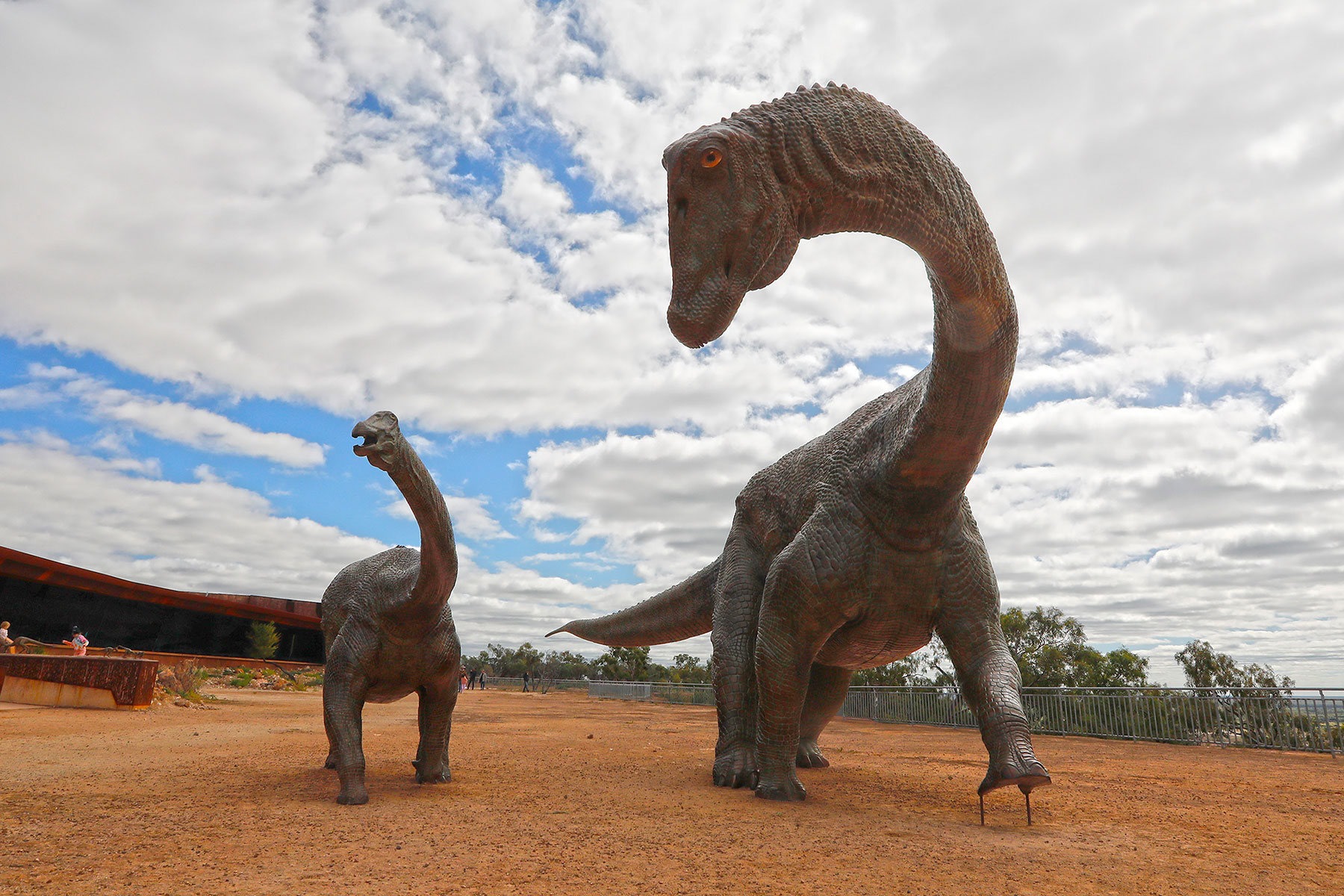
Winton occupies one corner of a themed touring route around central Queensland, known as the Australian Dinosaur Trail (ADT). This roughly triangular circuit connects Hughenden, with a superb skeleton of Muttaburrasaurus at the Flinders Discovery Centre; Richmond’s display of marine fossils at Kronosaurus Korner; and Winton, with the nearby Australian Age of Dinosaurs (AAOD) and the Lark Quarry Conservation Park 110km to the south.
The ADT website (www.australiasdinosaurtrail.com.au) describes the unique features of these locations and, while they are all well worth a visit, the outstanding AAOD is unquestionably the region’s premier attraction.
The Australian Age of Dinosaurs
Following the discovery of fossils on Belmont Station in 1999, the not-for-profit organisation ‘Australian Age of Dinosaurs’ was formed to continue dinosaur digs and conserve the unearthed fossil treasures. Since then, with the assistance of the Queensland Museum and government funding, the AAOD has developed the Museum of Natural History, which is home to the world's largest collection of Australian dinosaur fossils and the most productive fossil preparation laboratory in the Southern Hemisphere.
The museum occupies a spectacular 1800ha site commanding panoramic views from the top of an ancient mesa plateau, 25km south-east of Winton on the Landsborough Highway. Attracting nearly 60,000 visitors annually, the museum has three facilities, with tours of each illuminating unique aspects of a ‘total dinosaur experience’.
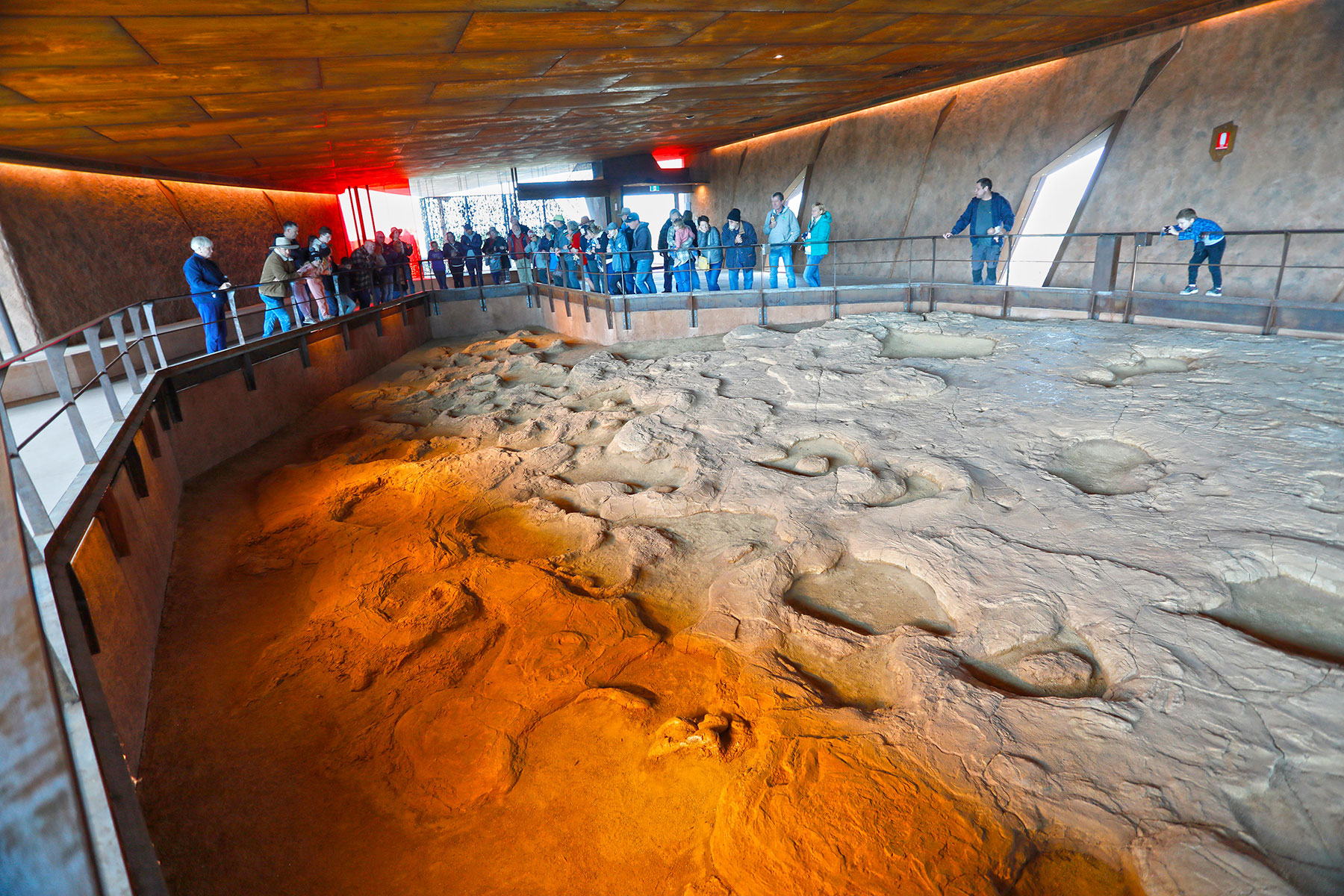
The award-winning Reception Centre contains the climate-controlled Collection Room housing fossil specimens of some of the region’s signature sauropods. The guided tour of the room is complemented by an animated audio-visual presentation of western Queensland's dinosaurs and excerpts from the Museum’s movie documentary, Monsters in the Outback.
The Fossil Preparation Laboratory provides a behind-the-scenes view of the pain-staking work carried out by paleontologists and technicians to recover fossils from their stony deposits and prepare them for scientific study and public exhibition.
The Dinosaur Canyon Outpost incorporates a 300m elevated concrete pathway which explores five galleries featuring life-size dinosaurs cast in bronze to recreate life as it would have been around prehistoric Winton. An adjacent architect-designed pavilion houses the ‘March of the Titanosaurs’, a 54m track site of dinosaur footprints recovered and relocated from a creek channel on a property near Winton.
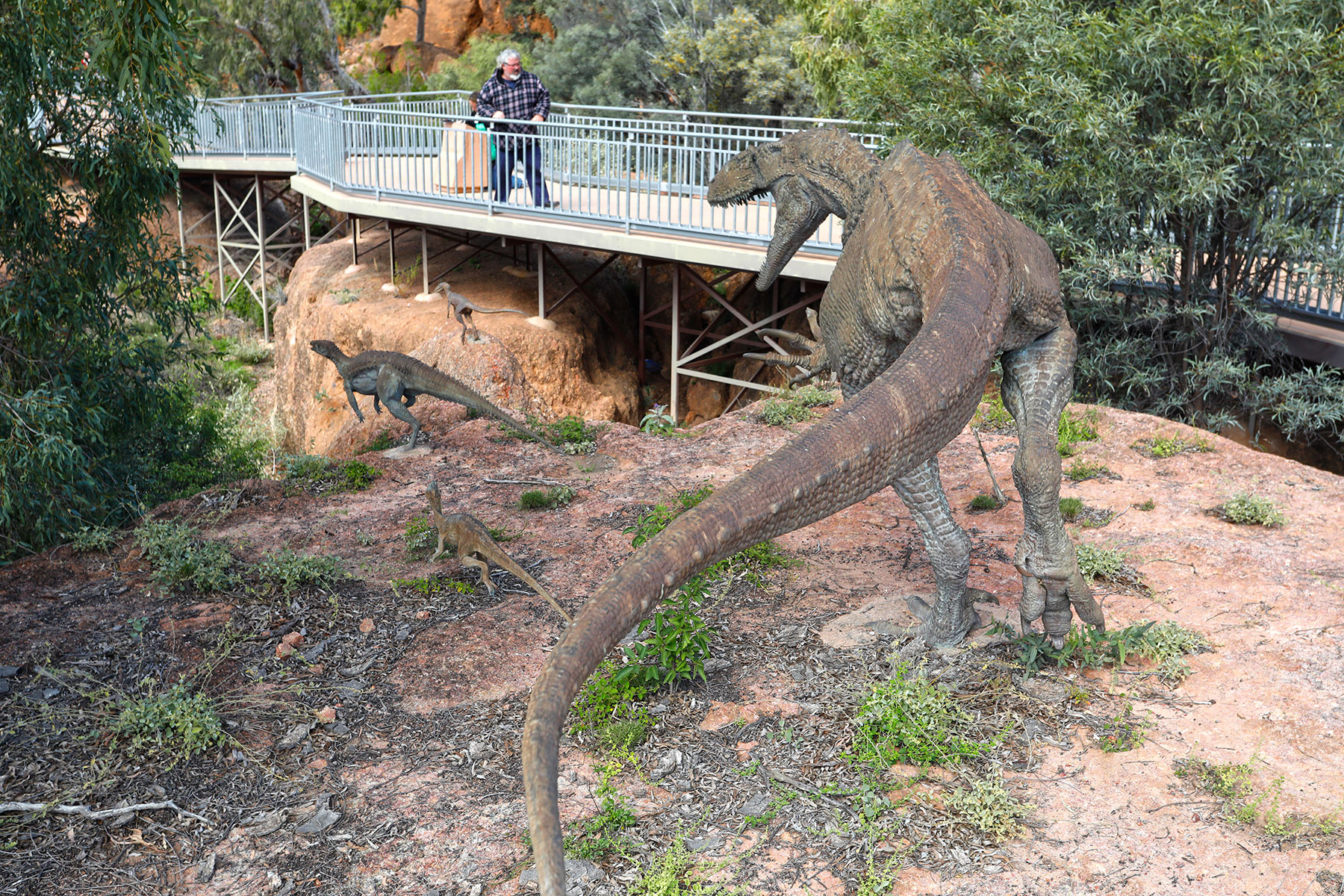
Events and Other Attractions
There is much else to keep a visitor busy for a couple of days exploring this genuinely fascinating town and engaging with its friendly community in celebrating annual events.
A walk down the main street (Elderslie) with an interpretive town map (available at the Waltzing Matilda Centre) will reveal many reminders of the town’s unique outback heritage. A broad green nature strip running two blocks through the business centre has been landscaped with sculptures and displays on pastoral and historic themes, such as the ‘Jolly Swagman’ sculpture and the ‘Pelican Waterhole’ installation opposite Tattersalls Hotel.
Museum-minded folk will enjoy the heritage-listed Corfield and Fitzmaurice Store (built in 1916 to replace the original one) as one of the most perfectly preserved old-style general stores in Australia, currently used for displays of local crafts, gemstones and minerals; and the Diamantina Heritage Truck and Machinery Museum on Manuka Street with an impressive array of classic trucks that showcase the region’s road transport heritage.
The current North Gregory Hotel, the fourth of its lineage (the first three burned down), was built in 1955 in a charming art deco style in the same location as the original pub and houses a fascinating collection of historic photographs in the Daphne Mayo Dining Room.
Opened in 1918, the historic Royal Theatre is one of the few open-air picture theatres still operating in Australia, and is home to The Big Deck. The Theatre Museum features exhibits of the theatre’s history and the Opal Walk, which offers an insight into the local opal industry.
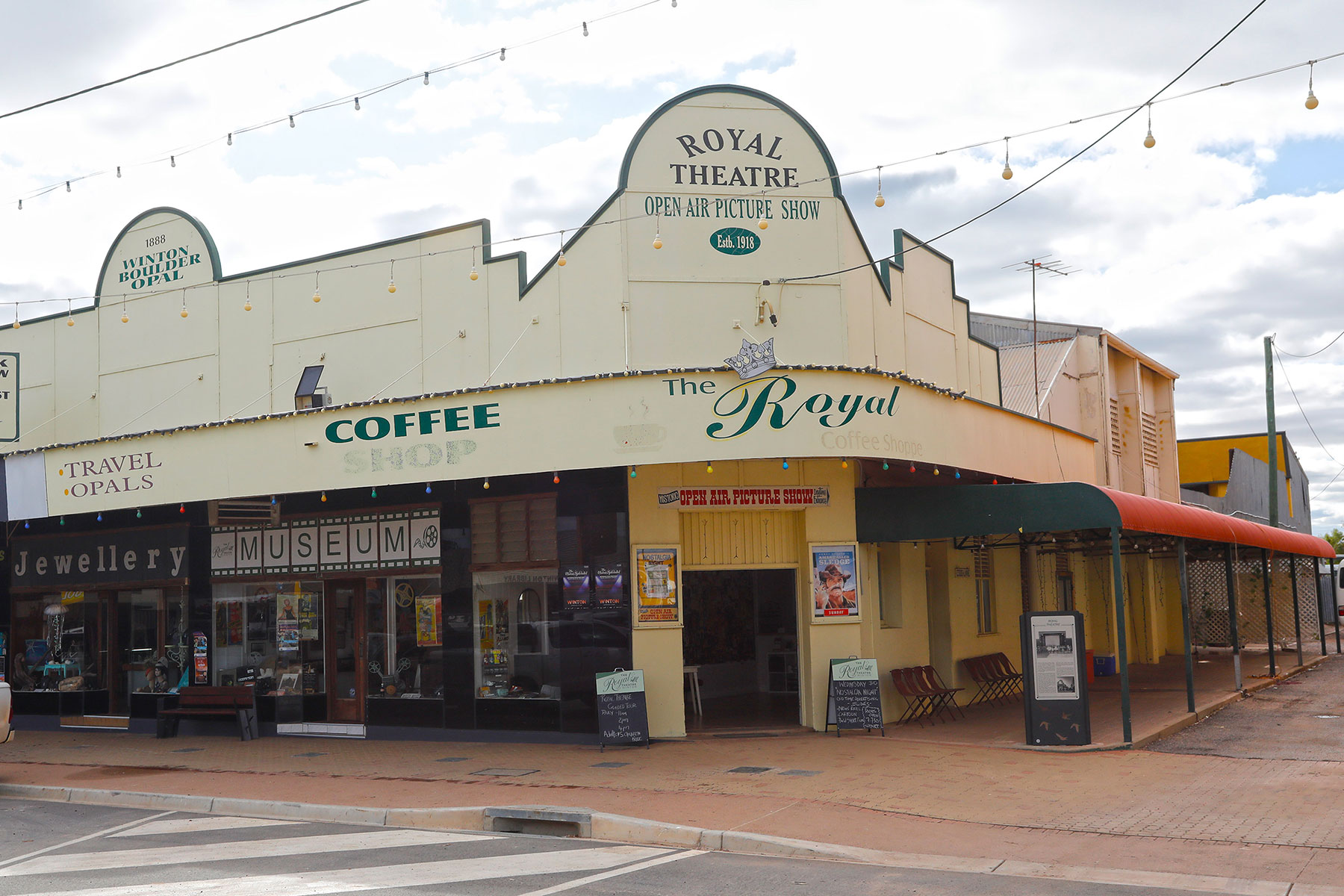
Even when they’ve seen all these sights (and there are many more), several annual events and festivals are guaranteed to draw visitors back to Winton, such as the multi-award-winning Outback Festival held in September in odd-numbered years; the Outback Century Cycle Challenge; the annual Vision Splendid Outback Film Festival; and the Matilda Country Handicap, which continues a horse racing tradition dating back to the 1880s.
THE NEXT STEP
If you need help choosing your first caravan or are considering upgrading your existing one, check out the caravans available on TradeRVs today.
The sellers will be happy to help and answer any inquiries you may have about the products advertised for sale.







